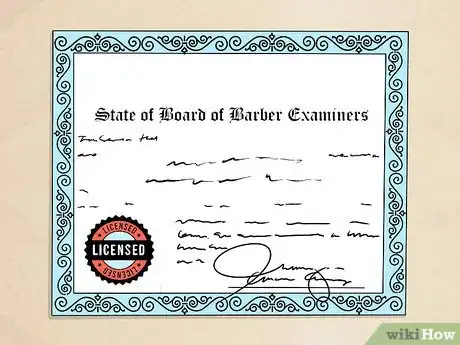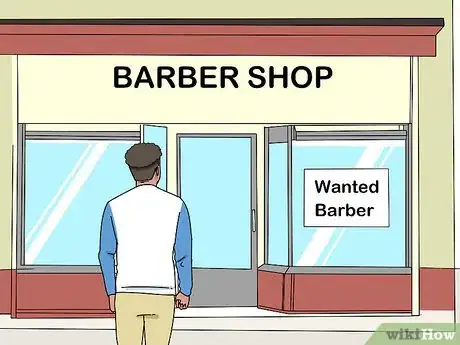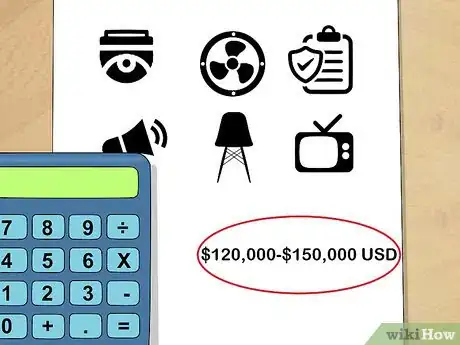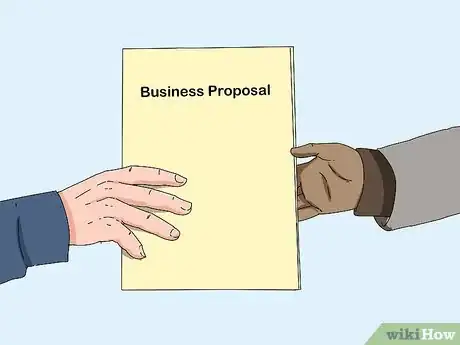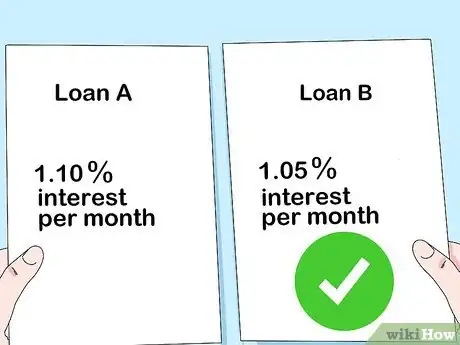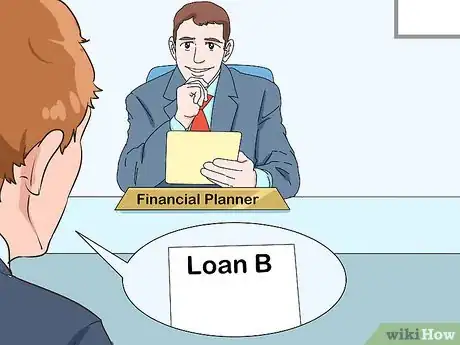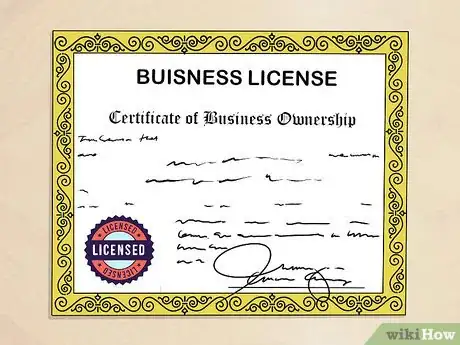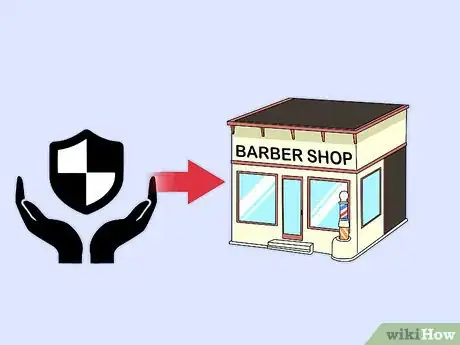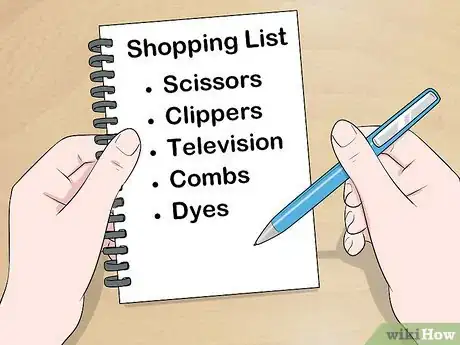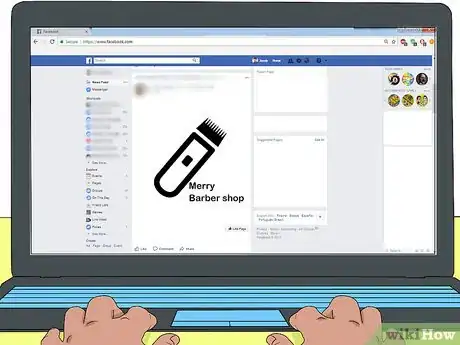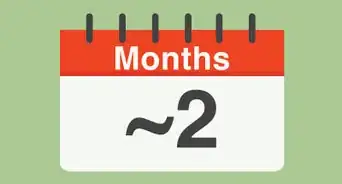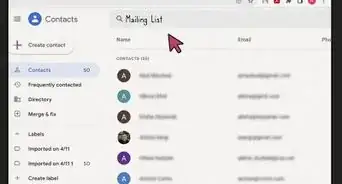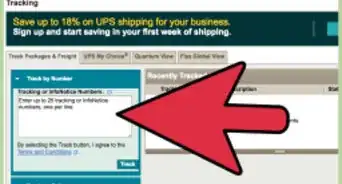This article was co-authored by Brian Honigman. Brian Honigman is a Marketing Consultant and the Owner of Honigman Media LLC. With over a decade of marketing experience, he specializes in consulting with organizations about digital marketing, social media, and content marketing. Brian holds BA in Political Science and Journalism from The University of Pittsburgh. In addition to being a Consultant, Brian is an Adjunct Marketing Professor at New York University and Francisco Marroquín University. His work providing consulting services, training workshops, and coaching programs led to him being named “Digital Marketing Expert” by Entrepreneur and a “Top Social Media Pro” by Social Media Examiner. Brian’s notable clients include The United Nations Development Programme, Thomson Reuters, NATO, and People Magazine.
There are 14 references cited in this article, which can be found at the bottom of the page.
wikiHow marks an article as reader-approved once it receives enough positive feedback. This article has 13 testimonials from our readers, earning it our reader-approved status.
This article has been viewed 315,008 times.
Starting your own barbershop is a big decision. However, if you are passionate about cutting hair, it can be a rewarding line of work. Identify the requirements necessary to obtain a barber's license in your area and get some experience working as a barber. Develop a business proposal and get a loan for your shop, if necessary. Outfit your shop handsomely and promote it via advertising and social media.
Steps
Becoming a Barber
-
1Contact your barbers' regulatory authority to determine the licensing requirements. While these requirements vary in their specifics, you'll typically have to be a legal adult with at least a high school diploma. You'll also often be required to prove that you've cut hair for a substantial time period (typically in the 1,000-hour range).
- The licensing authority that establishes the requirements might be a barber examiners board, a board of cosmetology, or a similar board.
-
2Attend barber school. A barber school is an institution that teaches you how to be a barber. Locate barber schools in your area and schedule a meeting with a representative of the school. There is no right choice when choosing a barber school. If you have multiple barber schools in your area, compare the cost, quality of instruction, and level of attention you'll get at each when making your decision.[1]
- Barber school will teach you how to use different scissors, clippers, combs, and other hair styling tools. You'll also learn how to clip hair (including facial hair) and gain experience sculpting different hairstyles.
- When researching barber schools, find out how large the class sizes are. Smaller classes are generally better, since you'll likely get more personalized instruction.
- The cost of attending barber school varies significantly from place to place. In the U.S., for instance, costs can range from $6,500 to $10,000.[2]
- Barber school programs necessary for certification typically last about 1 year.
Advertisement -
3Gain some work experience in school and through externships. Early in your barber school training, you'll gain experience cutting hair by practicing on mannequins. Later, you'll probably be assigned (or asked to seek out) an externship with a local barbershop. There you'll work as an apprentice and be tasked with cutting clients' hair.[3]
- If you're asked to find an externship on your own, approach various barbershops and explain that you are a barber school student in search of work opportunities. Provide the barber with all relevant information, including how long you wish to apprentice there, what your experience is to date, and what your career goals are.
-
4Obtain your barber's license. Once you've identified and fulfilled the requirements for becoming a barber, fill out the license application and submit it with the appropriate fee. The cost of this fee ranges from $20 up to $110 or more depending on your location.
- Proving you're experienced typically requires attaching a letter or signature from the licensed barber under whom you trained or worked, as well as the transcripts or degree from the barber school you attended.
-
5Perfect your craft by cutting hair at another barbershop. After completing your education and training period, you might not feel confident enough to open your own barbershop just yet. That's okay! Look for opportunities to extend your training under the same barber you've been working with, or find a better-paying opportunity elsewhere.[4]
- As an employee of another barbershop, you'll typically pay rent for a chair. For instance, you might pay $100 per week to cut hair at the shop, and take home everything you keep.
- Alternately, you might be paid an hourly wage when working as an employee.
Securing Startup Capital
-
1Calculate how much you'll need to start your barbershop. The costs of starting a barbershop will vary depending on the services your provide, the number of employees you have, and local conditions like the cost of renting a storefront. Generally, however, starting a barbershop costs somewhere in the range $120,000-$150,000 USD.[5]
- These costs are used to pay for store equipment (cash registers, security systems, ventilation, and so on), insurance, marketing and advertising, inventory (combs, shampoos, clippers, and so on), and miscellaneous costs (like your sound system, waiting area chairs, and TV).
-
2Provide lenders with a business proposal. The business proposal should include a spreadsheet that includes each item of your projected costs, as well as an indication of whether it's a one-time cost (like a television) or an ongoing cost (like rent and shampoo). Include information about yourself and your experience as a barber, your vision for the barbershop, and your expectations for the future of the business. This proposal show potential lenders know that you're serious about using your loan wisely.[6]
- Lenders will also want to know basic information like the location where you want to locate your business, the cost of your lease, your expected monthly earnings, and the specific products and services you'll provide.[7]
- Lenders might also want you to pledge company assets as a form of security interest. This means that in the even you cannot repay your loan, the lender will be permitted to take some of your barbershop's property or income.
-
3Compare loans from a variety of lenders. Check for loans from large commercial banks, local community banks, and peer-to-peer lending sites. Each of these lenders will offer different loan packages.[8]
- Shop around for loans from several lenders. Choose the loan with the low interest, the fewest fees, and the longest repayment period.
- Look over potential loans with an accountant or financial advisor you trust. Your financial expert should enable you to help you identify the best loan for your barbershop.
Attending to Business Regulations
-
1Determine what sort of business you want to start. You will have to designate your barbershop as one of three different types of businesses. Each of these has different tax structures and regulatory guidelines. Consult an accountant or financial planner to help you determine which type of business is best.[9]
- If you plan on being the sole owner and operator of your shop, you should found your barbershop as a sole proprietorship.
- If you intend to act as the head barber and hire a staff of other barbers to help out, your best bet is to establish your shop as an LLC (a limited liability corporation).
- If you intend to start a large barbershop business with multiple locations, a large staff, and investors, you should establish your shop as a corporation.
EXPERT TIPMarlon Rivas is a Barber and Owner of MGX Professional Men's Grooming, a barbershop based in the San Francisco Bay Area. He is also the founder of Busystyle.com, a service that provides online scheduling services to businesses in the barbering and beauty industry. Marlon has over 15 years of experience in managing and providing barber services.Facial Hair Specialist
 Marlon Rivas
Marlon Rivas
Facial Hair SpecialistPlan an exit strategy if you're entering a partnership. If you're planning to open a barbershop with a friend or another barber, sit down and have a conversation about different scenarios where one of you might want to leave. Discuss your percentages of ownership and each of your buyout. that way, if your vision changes or one wants to buy out the other later on, you'll already have that plan established.
-
2Obtain a business license once you know what sort of business you want to form. The process by which you obtain and complete your business license varies depending on your local laws and regulations. In some cases, the business license can be obtained from your city government, while in other cases you'll have to apply for a business license through your county government.[10]
- The license application often requires information about the address where you want to open your shop, the estimated cost of the lease, and the type of business you want to open.
- The business license is different than the barber's license. The barber's license enables you to work as a barber, while the business license is necessary for you to own and operate a business.
-
3Obtain additional licenses, if necessary. For instance, in some places you might need a license for playing background music in your shop.[11] You might also need a health license to prove you understand how to keep your combs and clippers clean.
- Ask the licensing authority if they recommend or know of additional licenses you might require at the local, state, or national level.
-
4Get insurance for your shop. Even if you aren't legally required to get insurance, you should get it anyway. You'll want to get various types of insurance, including:[12]
- Liability and accident insurance to protect you from client lawsuits
- Fire, flood, and other types of insurance to protect your building
Establishing and Growing Your Business
-
1Locate a good place for your barbershop and sign a lease. The best location will be highly visible and easily accessible by both foot and vehicle. It should also be located near other businesses.[13]
- The conditions which qualify as a good location for a barbershop vary substantially from place to place. A good location might be downtown, in a big city, or in a rural area.
- Talk to a realtor if you need help identifying a good location in your local region.
-
2Buy the necessary equipment. Use the inventory list you developed for your business proposal as a shopping list. Do some research when purchasing equipment and shop around to get the very best prices.[14]
- The process by which you'll buy the necessary equipment varies depending on which equipment you want. Some of the things you want to buy (scissors, clippers, and televisions for waiting area customers) might be available in stores.
- Some equipment (like special combs or dyes) might only be available online.
- Some items will likely be available both online and in stores.
-
3Promote your shop online. Get the word out about your business through Facebook, Twitter, and other social media sites.[15] Use these sites regularly to reach out to potential customers. Additionally, develop a website that lists your hours, address, phone number, the name of your business, the services you provide, and a map that shows the location of your shop.[16]
- Building clientele takes time. Be patient in your first few months and promote your business continuously.
- You can post before and after videos on Instagram and TikTok to visually communicate your service.[17]
- Try to build a relationship with your customers and provide them with a more personalized experience.[18]
-
4Advertise through your local media. Purchase ads in your local paper and on websites, radio stations, and television stations in your area. The prices for these advertisements vary considerably from place to place. Your ads will also vary depending on the type of ad you're developing.[19]
- An ad for TV or radio might use a catchy song or “jingle.”
- All your ads should include the name of your business, your address and phone number, and an enticing list of the service your provide.
- 30-second TV ads range in cost from $200 to $1,500 USD depending on your location. When producing a TV ad, include footage of your clean and inviting barbershop.
- Print ads in local newspapers often run between $50 to $200 USD for a small black-and-white ad of average size.
- If you include images of yourself or your employees in your TV or print ads, appear friendly by smiling and waving.
- If you need help developing your ad, consult a local graphic designer or marketing agency.
- Offering grand opening discount haircuts and specials is a great way to drive new clients to your shop.
Expert Q&A
-
QuestionWhich places are suitable for promoting a hair salon?
 Brian HonigmanBrian Honigman is a Marketing Consultant and the Owner of Honigman Media LLC. With over a decade of marketing experience, he specializes in consulting with organizations about digital marketing, social media, and content marketing. Brian holds BA in Political Science and Journalism from The University of Pittsburgh. In addition to being a Consultant, Brian is an Adjunct Marketing Professor at New York University and Francisco Marroquín University. His work providing consulting services, training workshops, and coaching programs led to him being named “Digital Marketing Expert” by Entrepreneur and a “Top Social Media Pro” by Social Media Examiner. Brian’s notable clients include The United Nations Development Programme, Thomson Reuters, NATO, and People Magazine.
Brian HonigmanBrian Honigman is a Marketing Consultant and the Owner of Honigman Media LLC. With over a decade of marketing experience, he specializes in consulting with organizations about digital marketing, social media, and content marketing. Brian holds BA in Political Science and Journalism from The University of Pittsburgh. In addition to being a Consultant, Brian is an Adjunct Marketing Professor at New York University and Francisco Marroquín University. His work providing consulting services, training workshops, and coaching programs led to him being named “Digital Marketing Expert” by Entrepreneur and a “Top Social Media Pro” by Social Media Examiner. Brian’s notable clients include The United Nations Development Programme, Thomson Reuters, NATO, and People Magazine.
Marketing Consultant Instagram and TikTok are places where a hair salon can consistently promote what they are doing and satisfy customers.
Instagram and TikTok are places where a hair salon can consistently promote what they are doing and satisfy customers. -
QuestionHow can you promote a hair salon business?
 Brian HonigmanBrian Honigman is a Marketing Consultant and the Owner of Honigman Media LLC. With over a decade of marketing experience, he specializes in consulting with organizations about digital marketing, social media, and content marketing. Brian holds BA in Political Science and Journalism from The University of Pittsburgh. In addition to being a Consultant, Brian is an Adjunct Marketing Professor at New York University and Francisco Marroquín University. His work providing consulting services, training workshops, and coaching programs led to him being named “Digital Marketing Expert” by Entrepreneur and a “Top Social Media Pro” by Social Media Examiner. Brian’s notable clients include The United Nations Development Programme, Thomson Reuters, NATO, and People Magazine.
Brian HonigmanBrian Honigman is a Marketing Consultant and the Owner of Honigman Media LLC. With over a decade of marketing experience, he specializes in consulting with organizations about digital marketing, social media, and content marketing. Brian holds BA in Political Science and Journalism from The University of Pittsburgh. In addition to being a Consultant, Brian is an Adjunct Marketing Professor at New York University and Francisco Marroquín University. His work providing consulting services, training workshops, and coaching programs led to him being named “Digital Marketing Expert” by Entrepreneur and a “Top Social Media Pro” by Social Media Examiner. Brian’s notable clients include The United Nations Development Programme, Thomson Reuters, NATO, and People Magazine.
Marketing Consultant You can post before and after videos on social media to visually communicate your service. Try to build a relationship with your customers and provide them with a more personalized experience.
You can post before and after videos on social media to visually communicate your service. Try to build a relationship with your customers and provide them with a more personalized experience. -
QuestionCan I open a barbershop and have experienced barbers pay me monthly rent for the use of my place and chairs?
 Community AnswerYes, many barbers/hairstylists rent their chairs in salons/shops.
Community AnswerYes, many barbers/hairstylists rent their chairs in salons/shops.
References
- ↑ http://www.artofmanliness.com/2011/04/28/so-you-want-my-job-barber/
- ↑ http://www.profitableventure.com/cost-start-a-barber-shop/
- ↑ http://www.beautyschoolsdirectory.com/faq/barber.php#node
- ↑ http://www.artofmanliness.com/2011/04/28/so-you-want-my-job-barber/
- ↑ http://www.profitableventure.com/cost-start-a-barber-shop/
- ↑ http://www.bplans.com/mens_salon_business_plan/company_summary_fc.php
- ↑ http://www.bplans.com/mens_salon_business_plan/products_and_services_fc.php
- ↑ https://www.forbes.com/sites/allbusiness/2017/03/22/10-key-steps-to-getting-a-small-business-loan/#3dfca51e40f6
- ↑ https://www.barber-license.com/what-every-barber-needs-to-know-about-opening-an-independent-barbershop/
- ↑ https://www.barber-license.com/what-every-barber-needs-to-know-about-opening-an-independent-barbershop/
- ↑ https://www.gov.uk/licences-to-play-background-music
- ↑ http://www.artofmanliness.com/2011/04/28/so-you-want-my-job-barber/
- ↑ https://www.barber-license.com/what-every-barber-needs-to-know-about-opening-an-independent-barbershop/
- ↑ https://www.modernsalon.com/article/9846/how-to-open-a-barber-shop-right-right-now
- ↑ Brian Honigman. Marketing Consultant. Expert Interview. 16 April 2021.
- ↑ https://www.barber-license.com/what-every-barber-needs-to-know-about-opening-an-independent-barbershop/
- ↑ Brian Honigman. Marketing Consultant. Expert Interview. 16 April 2021.
- ↑ Brian Honigman. Marketing Consultant. Expert Interview. 16 April 2021.
- ↑ https://www.barber-license.com/what-every-barber-needs-to-know-about-opening-an-independent-barbershop/
About This Article
Before you start a barbershop, attend barber school and spend some time working in another shop to gain experience. Then, find a shop location that’s near other businesses and is easy for people to get to. Next, buy the equipment you’ll need, such as chairs, clippers, and special combs. Additionally, contact your local government and complete the forms to get a business license in addition to your barber’s license. Once your shop is ready, advertise your business online using social media or take out an ad in a local newspaper to get more customers. For advice on how to calculate the start-up costs of a barbershop, keep reading.



